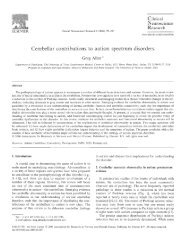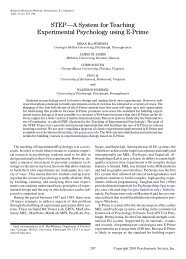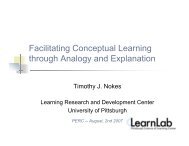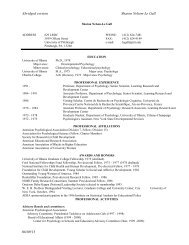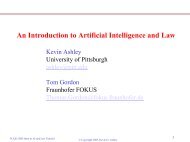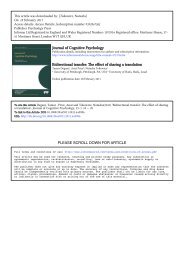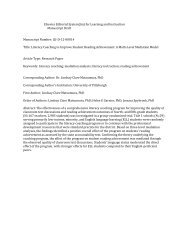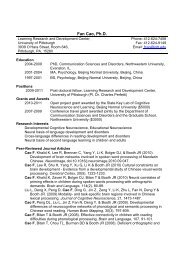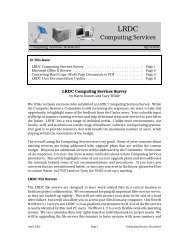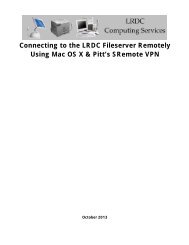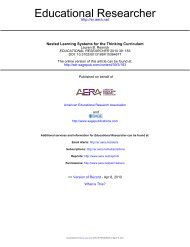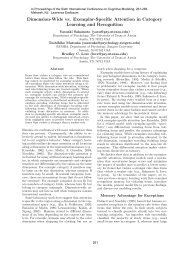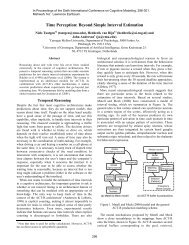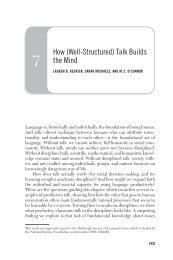[on] how people learn science - Learning Research and ...
[on] how people learn science - Learning Research and ...
[on] how people learn science - Learning Research and ...
Create successful ePaper yourself
Turn your PDF publications into a flip-book with our unique Google optimized e-Paper software.
Children’s televisi<strong>on</strong> Workshop<br />
3-2-1 C<strong>on</strong>tACt<br />
(1980)<br />
this <strong>science</strong> <strong>and</strong> technology<br />
s<strong>how</strong> developed by the<br />
Children’s televisi<strong>on</strong><br />
Workshop ran seven seas<strong>on</strong>s<br />
in a magazine format. Its<br />
features included interviews<br />
with scientists <strong>and</strong> popular<br />
skits with a group of child<br />
detectives called the<br />
bloodhound gang, who used<br />
scientific knowledge <strong>and</strong><br />
procedures to solve mysteries.<br />
bILL nyE thE SCIEnCE guy<br />
(1993)<br />
KIng-tv, Seattle’s nbC affiliate, first aired the<br />
s<strong>how</strong> by the Cornell university engineer while he<br />
was mo<strong>on</strong>lighting as a st<strong>and</strong>-up comic, according<br />
to his biography site. the s<strong>how</strong> w<strong>on</strong> 18 Emmys<br />
in its five years <strong>on</strong> air <strong>and</strong> has spun off several<br />
<strong>science</strong> s<strong>how</strong>s, such as the Science Channel’s<br />
“100 greatest discoveries,” “the Eyes of nye”<br />
<strong>on</strong> PbS, <strong>and</strong> Planet green’s “Stuff happens.”<br />
liFelONg learNiNg<br />
16 WAKIng houRS<br />
Ages<br />
0-5<br />
CoSmoS:<br />
A PERS<strong>on</strong>AL<br />
voyAgE (1980)<br />
the internati<strong>on</strong>ally renowned<br />
astrophysicist Carl Sagan<br />
presented <strong>and</strong> co-wrote both<br />
this 13-episode series <strong>and</strong> an<br />
accompanying book, which<br />
PbS first aired. According to<br />
its website, it remains the most<br />
popular PbS series in the world.<br />
A relatively small percentage of waking hours across the<br />
life span are spent in formal educati<strong>on</strong>al envir<strong>on</strong>ments.<br />
9.25%<br />
18.5% 7.7% 5.1%<br />
Grades 1-12<br />
Kindergarten<br />
SouRCE: <strong>Learning</strong> in Informal <strong>and</strong> Formal Envir<strong>on</strong>ments Center<br />
Undergraduates<br />
S4 Educati<strong>on</strong> WEEK: sciEncE lEarning outsidE thE classroom l www.edweek.org/go/<strong>science</strong>report l april 6, 2011<br />
A link to these s<strong>how</strong>s<br />
is provided at<br />
edweek.org/links.<br />
mythbuStERS (2003)<br />
thE CRoCodILE huntER<br />
(1997)<br />
this wildlife documentary hosted by the<br />
exuberant Australian naturalist <strong>and</strong> zoo<br />
owner Steve Irwin proved a breakout hit for<br />
the cable channel Animal Planet in more<br />
than 130 countries before mr. Irwin was<br />
killed in 2006. It spun off several specials<br />
<strong>and</strong> a children’s program, “bindi, the<br />
Jungle girl,” hosted by mr. Irwin’s schoolage<br />
daughter.<br />
the discovery Channel launched this series, hosted by two<br />
hollywood special-effects designers <strong>and</strong> their assistants,<br />
who test urban legends, Internet rumors, <strong>and</strong> historical myths<br />
through experiments. In 2009, President barack obama asked<br />
the team to re-create (<strong>and</strong> eventually bust) the legend that<br />
the ancient greek Archimedes used a “solar death ray”<br />
of mirrors to ignite invading ships in 212 b.C.<br />
PhotoS by AP ExCEPt WhERE IndICAtEd<br />
Formal <strong>Learning</strong> Envir<strong>on</strong>ments<br />
Informal <strong>Learning</strong> Envir<strong>on</strong>ments<br />
Postgraduates Workers Retirees


![[on] how people learn science - Learning Research and ...](https://img.yumpu.com/4764286/6/500x640/on-how-people-learn-science-learning-research-and-.jpg)
